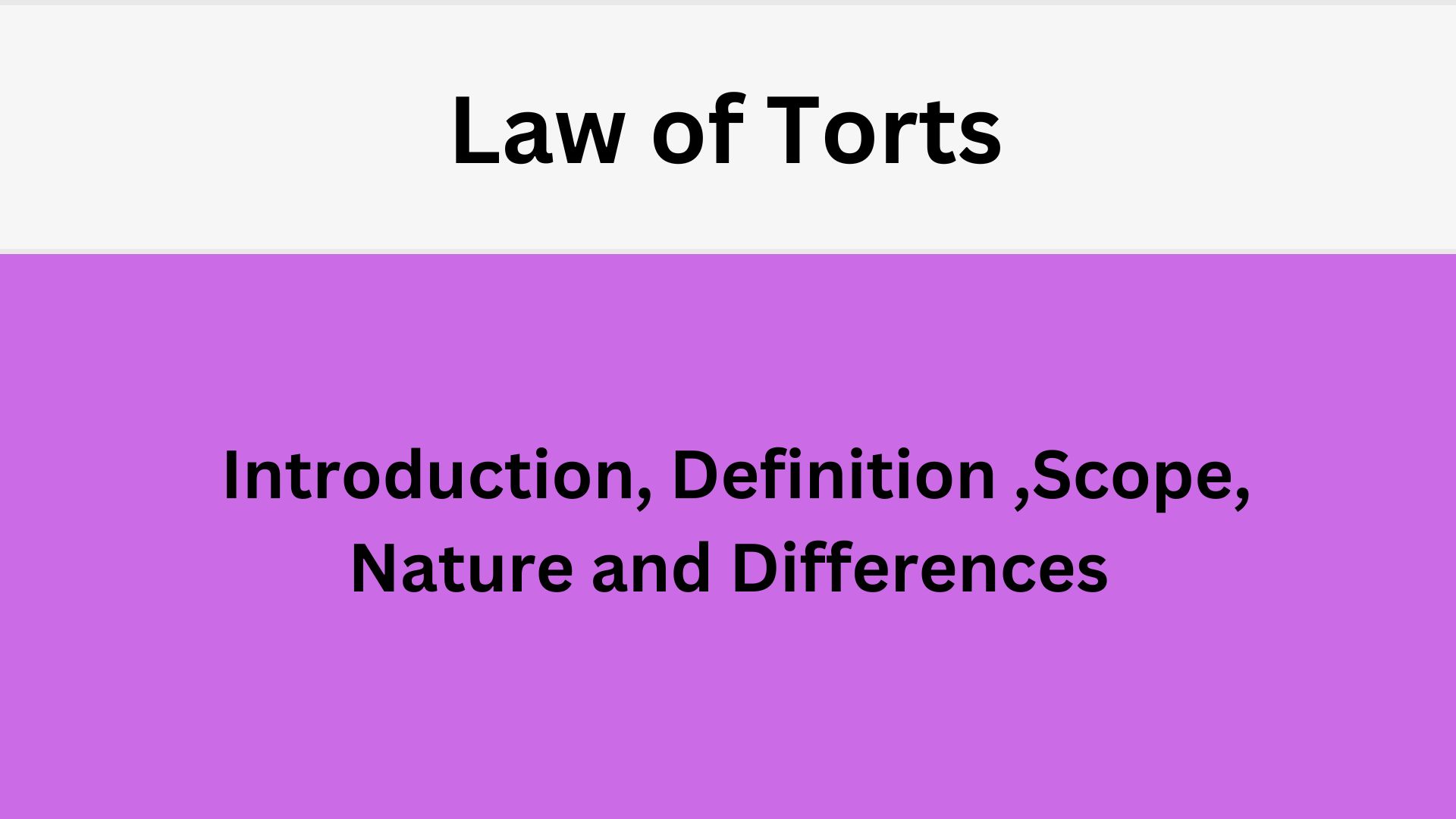Definition:
Tort law in India, like in other common law countries, deals with civil wrongs. A tort is a civil wrong that causes a claimant to suffer loss or harm, resulting in legal liability for the person who commits the tortious act. The term “tort” is derived from the Latin word “tortum,” which means “twisted” or “crooked,” signifying a deviation from the legal norm.
Nature:
- Civil Wrong: Torts are civil wrongs, meaning they are not criminal offenses but still require legal remedies.
- Infringement of Rights: Torts involve the violation of a person’s private rights, such as the right to property, personal safety, or reputation.
- Compensation: The primary aim of tort law is to compensate the victim for the harm suffered due to the wrongful act of the defendant.
- Fault-Based Liability: Liability in torts generally arises from the fault of the defendant, although some torts may impose strict or absolute liability regardless of fault.
- Common Law: Tort law in India is primarily based on common law principles, although some aspects are governed by statutory provisions.
Scope:
- Wide Range of Wrongs: Tort law covers a wide array of civil wrongs, including negligence, defamation, trespass, nuisance, and more.
- Flexible and Evolving: Tort law is flexible and evolves with changing societal norms and values, adapting to new situations and emerging areas such as environmental torts and privacy concerns.
- Overlap with Other Areas of Law: Tort law intersects with other areas of law, including contract law, criminal law, and property law.
Objectives:
- Compensation: To provide compensation to victims for the harm suffered due to the wrongful acts of others.
- Deterrence: To deter individuals and organizations from committing harmful acts by imposing liability and requiring them to pay damages.
- Justice: To ensure justice by holding wrongdoers accountable for their actions and providing redress to victims.
- Protection of Rights: To protect individual rights and provide remedies for their infringement.
Differences between Torts, Contracts, and Crimes
Torts:
- Nature: Civil wrongs resulting in harm or loss to an individual, giving rise to a claim for damages.
- Purpose: Primarily aims to compensate the victim for the harm suffered.
- Parties: Involves the injured party (plaintiff) and the wrongdoer (defendant).
- Burden of Proof: The plaintiff must prove that the defendant’s wrongful act caused the harm.
- Remedies: Remedies typically include monetary compensation (damages) and injunctions.
Contracts:
- Nature: Agreements between two or more parties that create mutual obligations enforceable by law.
- Purpose: To enforce the terms of the agreement and provide remedies for breach of contract.
- Parties: Involves the contracting parties who have entered into the agreement.
- Burden of Proof: The plaintiff must prove that a valid contract existed and that the defendant breached its terms.
- Remedies: Remedies may include damages, specific performance, rescission, and restitution.
Crimes:
- Nature: Acts or omissions that are offenses against the state or public, punishable by law.
- Purpose: To maintain public order and safety, and to punish and rehabilitate offenders.
- Parties: Involves the state (prosecution) and the accused (defendant).
- Burden of Proof: The prosecution must prove the defendant’s guilt beyond a reasonable doubt.
- Remedies: Remedies include punishment such as imprisonment, fines, probation, and community service.
| Aspect | Torts | Contracts | Crimes |
|---|---|---|---|
| Nature | Civil wrongs resulting in harm or loss to an individual, giving rise to a claim for damages. | Agreements between two or more parties that create mutual obligations enforceable by law. | Acts or omissions that are offenses against the state or public, punishable by law. |
| Purpose | Primarily aims to compensate the victim for the harm suffered. | To enforce the terms of the agreement and provide remedies for breach of contract. | To maintain public order and safety, and to punish and rehabilitate offenders. |
| Parties | Involves the injured party (plaintiff) and the wrongdoer (defendant). | Involves the contracting parties who have entered into the agreement. | Involves the state (prosecution) and the accused (defendant). |
| Burden of Proof | The plaintiff must prove that the defendant’s wrongful act caused the harm. | The plaintiff must prove that a valid contract existed and that the defendant breached its terms. | The prosecution must prove the defendant’s guilt beyond a reasonable doubt. |
| Remedies | Remedies typically include monetary compensation (damages) and injunctions. | Remedies may include damages, specific performance, rescission, and restitution. | Remedies include punishment such as imprisonment, fines, probation, and community service. |

